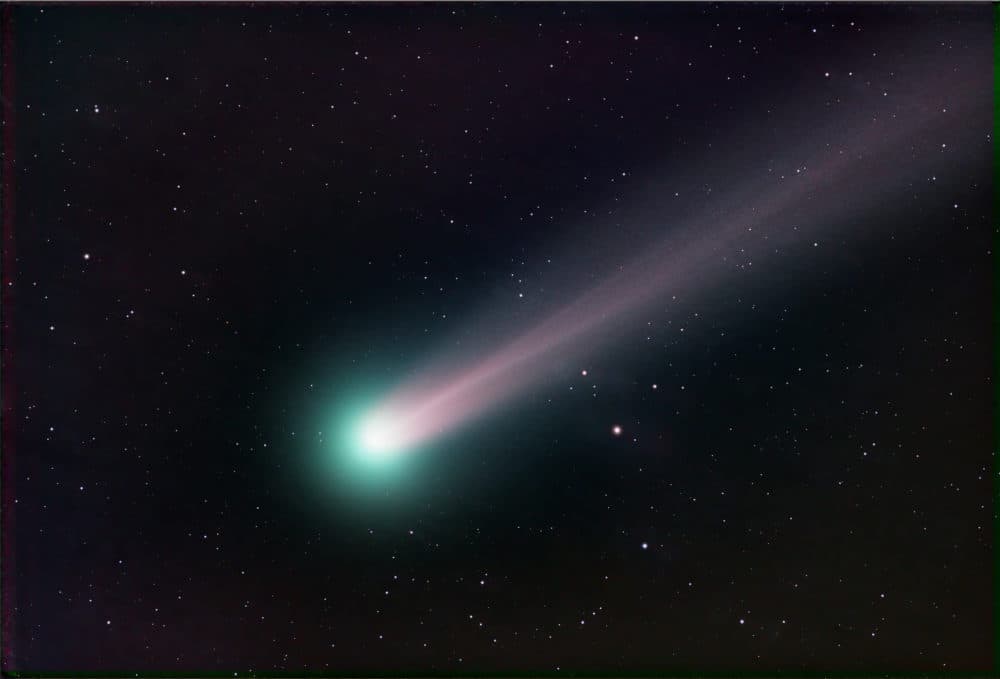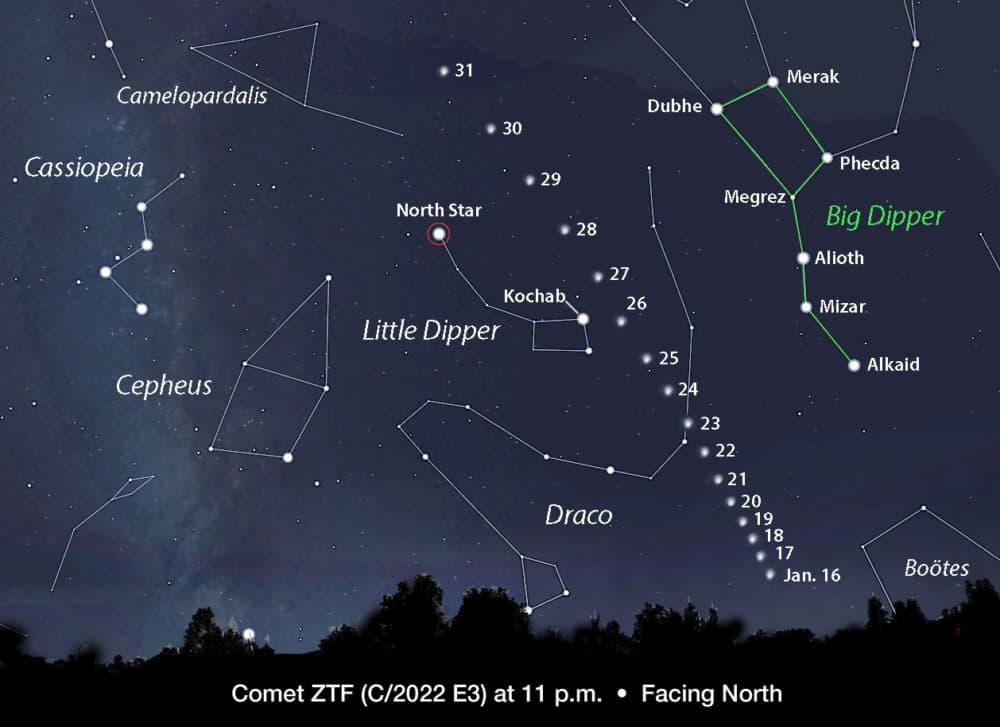Advertisement
How to see a bright green comet soar across the night sky

Get this story, and more like it, on our podcast.
For a once in 50,000-year opportunity, look to the skies.
Comet ZTF — first discovered in March 2022 — is making its way across the sky this month, traveling between the Big and Little Dippers, says Sky & Telescope senior editor Kelly Beatty.
The comet stands apart for its bright, aqua-green glow. It comprises “all kinds of exotic things,” from frozen carbon dioxide to frozen nitrogen, Beatty says. As the comet approaches the sun, it absorbs sunlight and gives off the striking green hue that distinguishes it among the stars.
“This comet has been inbound from this location that's a quarter of a trillion miles away for thousands of years, and it's just now coming close to the sun,” Beatty says.

The comet is visible now through the end of the month, with its closest approach to Earth on Feb. 1. It’s visible across the continental U.S. to the naked eye —though binoculars or a small telescope would help — but Beatty says to stay clear of any area with heavy light pollution if you hope to see ZTF.
“The more light pollution you have, the worse your chances of seeing the comet because this is one of those fuzzy soft objects that gets obliterated by light pollution, which is a real bane for astronomers and everyone trying to appreciate the night sky,” he says.
Light pollution isn’t just an issue for spotting comets. A new report in Science Magazine found that the night sky is becoming brighter, even with efforts in recent years to curb light pollution.
“People think of light pollution as being something that just affects astronomers but that's not true,” Beatty says. “We need it for safety and security, but too much of a good thing can interrupt our circadian rhythms as humans, it certainly interrupts the circadian rhythms of all of the nocturnal creatures that occupy the night.”
Advertisement
Julia Corcoran produced and edited this interview for broadcast with Todd Mundt. Katherine Swartz adapted it for the web.
This segment aired on January 20, 2023.